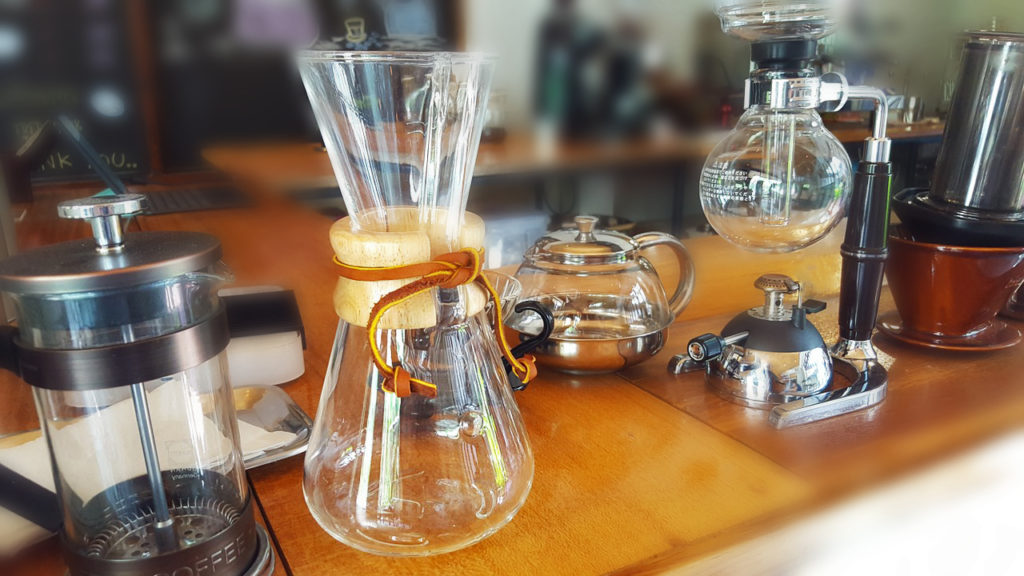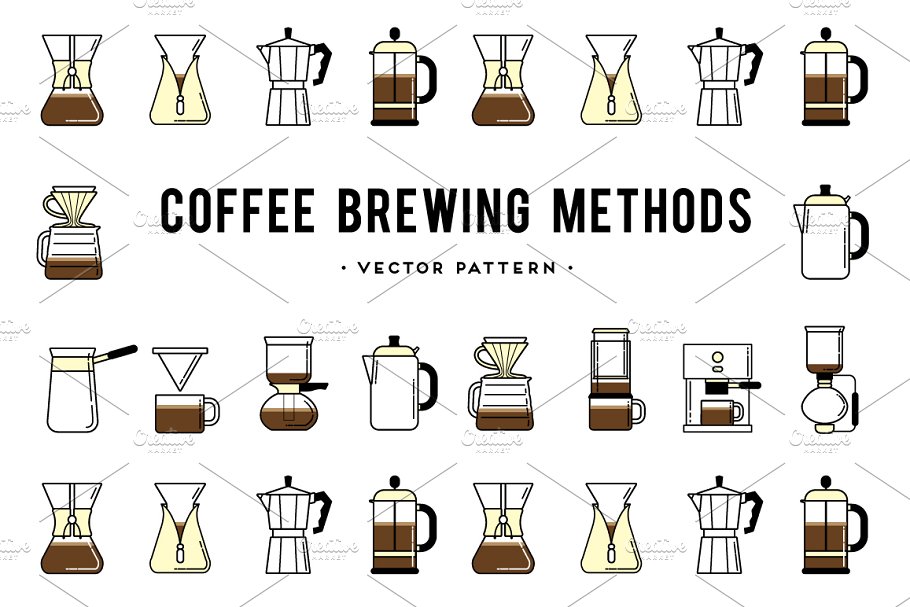Discovering the Art of Coffee Brewing Methods: Tips for Every Fanatic
The Scientific Research Behind Coffee Developing: How Temperature Level and Time Affect Your Drink
Understanding the science behind coffee developing exposes that temperature and time are not plain variables however pivotal elements that determine the drink's flavor profile and total top quality. The ideal brewing temperature level usually falls between 195 ° F and 205 ° F, while the duration of extraction varies dramatically across different approaches. This interplay of aspects can lead to a cup that is either unsatisfactory or fascinating. As we explore the nuances of these components, the inquiry develops: just how can one effectively balance temperature and time to attain that ideal brew?
The Chemistry of Coffee Removal
The chemistry of coffee extraction looks into the complex procedures that change raw coffee beans into the aromatic drink taken pleasure in worldwide. This transformation primarily entails the solubility of various compounds existing in the beans, which are affected by variables such as work size, water top quality, and the developing method utilized.
During the developing process, warm water serves as a solvent, extracting soluble compounds, consisting of caffeine, acids, sugars, and lipids, from the coffee premises. Each substance adds to the taste account, aroma, and body of the last beverage. For instance, acids are liable for appetizing and intense notes, while oils add to a rich mouthfeel.
The removal procedure is not consistent; various compounds liquify at various rates. The preliminary phases of brewing extract acids and sugars, resulting in an enjoyable level of acidity, while prolonged removal can result in anger due to over-extraction of undesirable compounds. Understanding these chemical interactions is vital for optimizing brewing strategies, as the balance in between extraction time and water temperature level can dramatically influence the general quality of the coffee. Inevitably, grasping the chemistry of coffee removal is essential to achieving a all-around and flavorful mug.
Suitable Developing Temperatures
Discovering the right developing temperature level is essential for opening the complete potential of coffee flavors and aromas - coffee brewing methods. Research study suggests that the optimal array for developing coffee exists between 195 ° F to 205 ° F(90 ° C to 96 ° C) Within this array, the removal procedure efficiently liquifies the desirable soluble substances in coffee beans, resulting in a delicious and well balanced mug
Brewing at lower temperatures, such as below 195 ° F(90 ° C ), may lead to under-extraction, producing a weak and acidic brew with muted tastes. Alternatively, developing at temperature levels exceeding 205 ° F(96 ° C) can cause over-extraction, producing a extreme and bitter taste due to the extreme dissolution of unwanted substances, such as tannins.
Additionally, the suitable developing temperature can differ relying on the coffee bean kind and roast degree. Lighter roasts typically profit from somewhat higher temperature levels to enhance their complicated taste profiles, while darker roasts might be much better suited to lower temperatures to reduce anger.
Inevitably, preserving precision in developing temperatures is important for achieving an unified equilibrium of tastes, making sure that every mug of coffee delivers a gratifying sensory experience.
Effect of Developing Time
Developing time plays an essential duty in identifying the flavor account and overall high quality of coffee. The extraction procedure, which influences the preference, scent, and body of the drink, is mainly depending on the length of time the coffee premises are in call with water. Much shorter brewing times can result in under-extraction, leading to a sour or weak flavor, as inadequate soluble compounds are dissolved. On the other hand, extended brewing can lead to over-extraction, where unwanted compounds are launched, resulting in a bitter or astringent preference.
Optimal brewing time differs depending upon the method used and the work size of the coffee. For example, a French press commonly requires about 4 minutes, while espresso removal is usually completed within 25 to 30 secs. It is vital to calibrate brewing time in combination with other variables, such as water temperature and coffee-to-water ratio, to achieve the preferred taste account.
Understanding the influence of brewing time allows coffee lovers to improve their developing strategies, eventually boosting the sensory experience of their mug (coffee brewing methods). With careful interest to this variable, one can open the complete capacity of the coffee, exposing its special features and nuances
Brewing Techniques and Their Effects

As an example, approaches like French press and cold brew enable a much longer steeping time, resulting in a fuller body and robust flavor due to enhanced extraction of oils and soluble solids. Alternatively, espresso developing utilizes high stress and a much shorter extraction time, generating a concentrated shot that highlights intense tastes and an abundant crema.
Pour-over techniques, such as Chemex or V60, supply an even more controlled extraction procedure, allowing the brewer to manipulate flow price and water circulation, which can boost illumination and quality. Meanwhile, percolation approaches cycle water via the coffee premises numerous times, leading to a stronger, typically bitter taste.
Finally, making use of paper filters versus steel filters can likewise influence the last preference; paper filters commonly generate a cleaner mug by trapping oils and fine particles, while steel filters enable even more oils to pass through, contributing to a fuller mouthfeel - coffee brewing methods. Comprehending these subtleties can boost the coffee experience dramatically
Tips for Refining Your Brew
A well-executed mixture can transform also the simplest coffee into an impressive experience. Grind the beans simply before making to take full advantage of freshness, ensuring the grind dimension matches your brewing method-- coarser for French press and finer for espresso.
Water high quality plays a crucial duty; use filteringed system water without pollutants. The suitable developing temperature varies in between 195 ° F and 205 ° F(90 ° C to 96 ° C ) Too hot can blister the coffee, while as well cool might under-extract tastes.
Timing is similarly vital. For immersion approaches, soaking for 3 to 5 minutes you could try here is optimum, whereas drip methods commonly take about five minutes. Trying out brew times to find your preferred toughness.

Verdict
In summary, the intricate relationship between temperature and time is vital in the coffee developing procedure. Adhering to optimal developing temperatures in between 195 ° F and 205 ° F, alongside exact timing tailored per approach, makes sure the desired taste profile is attained. Comprehending these scientific concepts encourages individuals to fine-tune their developing methods, inevitably resulting in a more delightful and well balanced coffee experience. Mastery of these factors is essential for any kind of coffee fanatic seeking excellence in their beverage.
Comprehending the science behind coffee developing discloses that temperature level and time are not plain variables but crucial components that determine the beverage's flavor account and total quality. Comprehending these chemical communications is crucial click here to read for maximizing developing strategies, as the balance in between removal time and water temperature can substantially affect the total top quality of the coffee.Developing time plays an essential duty in figuring out the taste account and general high quality of coffee. By focusing on these aspects-- bean high quality, grind size, water temperature level, soaking time, and proportion-- you can elevate your coffee developing procedure, resulting in a continually exceptional mug.
In recap, the elaborate partnership between temperature level and time is critical in the coffee brewing procedure.